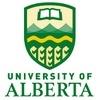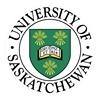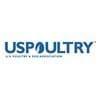Check out what is new in Pig Industry
Find the best technical articles, forums, and videos on Pig Industry at Engormix. Enter now and interact with the world's largest agricultural social network.

PhytriCare® IM is a plant-based premix with a high flavonoid content. It has been developed to prevent a too high inflammatory state in sows, laying hens, and dairy cows....
Comments : 1
Recommendations: 0
.jpg&w=3840&q=75)
Ronnick Fong, Executive director at Hangzhou De Mark Industrial, talks about the benefits of Magicoh Pellet Binder, a spray-dried urea-formaldehyde resin in powder form, that provides a cost-efficient solution to your binding requirements....
Comments : 1
Recommendations: 2
An engaging program
This year’s program was carefully designed to feature relevant and engaging presentations on the theme of “Strengthening the Nutritional Foundation for Animal and Industry Resiliency”. Experts in their fields will present on innovations in livestock nutrition for both major and minor livestock species and offer significant takeaways that attendees can apply to their daily roles in the industry.
...
Comments : 1
Recommendations: 0
Q: Can you tell us how you arrived at the proposed optimal ratios and amounts of true digestible AAs in diets that you have developed in your research? A: Results of studies by my group have established the concept that animals have dietary requirements for not only...
Comments : 5
Recommendations: 5

Stefan Eils, Director Sustainability Development at Evonik Animal Nutrition, discusses how Evonik is working on reducing the environmental impact of livestock operations around the world
...
Comments : 1
Recommendations: 1
Introduction The continuous increase in the area cultivated with genetically modified (GM) crops [1] and consequently their ubiquitous presence makes it increasingly difficult for consumers to avoid GM products. However, the dispute regarding the safety of GM crops is far from resolved [2] and consumer opinions vary over time and from country to country [3,4]. Bt MON810 maize is resistant to attack by Lepidopterae pests, as it expresses the Cry1Ab protein [5]. This protein is...
Comments : 0
Recommendations: 0
1. Introduction Artificial insemination (AI) in modern pig reproduction requires liquid-stored extended semen. Extenders provide sperm with nutrients to maintain metabolic processes, prevent cold shock, control osmotic pressure an pH, and antibiotics present in extender inhibit bacterial growth. Despiste the substantial improvements made on extender formulations in recent years. the quality of stored sperm decreases over time primarily due to the increased damage the plasma...
Comments : 0
Recommendations: 0
1. Introduction Traditionally, beer industry by-product (brewer’s grain) is used as a feedstuff intended for swine in the central region of Argentina. Worldwide, fungal contamination of foods and feeds, with consequent mycotoxin production, is a significant problem. Previous studies performed in Brazil determined the fungal flora as well as the presence of different mycotoxins in brewer’s grain and barley rootlets [1, 2]. Aflatoxins (AFs) are highly carcinogenic and...
Comments : 0
Recommendations: 0


Fermentation products of Cordyceps militaris enhance performance and modulate immune response of weaned piglets
Suggested link
Introduction On August 28, 2021, the United States Department of Agriculture (USDA) confirmed that African swine fever virus (ASFV) had been diagnosed in the Dominican Republic (https://www.aphis.usda.gov/aphis/newsroom/news/sa_by_date/sa-2021/asf-confirm). This poses a tremendous threat to the swine industry of the United States (U.S.) given the proximity to the mainland. When ASFV emerged in China, the virus was able to move rapidly and easily throughout the country due to movement...
Comments : 1
Recommendations: 0
Introduction Monogastric feeds are reliant on plant-based protein sources, like corn and soybean. However, increasing demands on these plant-based materials for non-food industries, such as biofuels, is also associated with an increase in the price of these feed ingredients, placing an impetus on the demand for these alternative protein sources (Leiber et al., 2017). Emerging areas of monogastric animal nutrition research include the use of insect meal, microalgae, single cell...
Comments : 1
Recommendations: 1
1. Introduction Commercial mixed feeds are a basic element in modern animal production. They contain mixtures of home grown cereals and imported commodities among other ingredients. The use of such ingredients inevitably leads to the contamination of the final mixed feed with fungi [1]. Mycotoxins are fungal secondary metabolites associated with severe toxic effects to vertebrates and produced by important phytopathogenic spoilage fungi including Aspergillus ,...
Comments : 0
Recommendations: 1
Introduction The global population is anticipated to reach around 10 billion people by 2050. At the same time the global middle-class is growing significantly particularly in high populous countries such as China and India. The combination of these two factors places significant pressure on global food systems which must be capable of providing food and nutrition security in 2050. The next 30 years are arguably one of the most critical transitions in human history as we approach a...
Comments : 1
Recommendations: 0
Introduction In Canada, barley is rarely fed to young pigs due to its relatively high fibre content that is associated with lower energy and nutrient digestibility (Che et al., 2012). Carbohydrates that are not digested in the small intestine may be fermented in the large intestine, and so provide energy and stimulate gut health (Fouhse et al., 2017). Barley cultivars with increased fermentable carbohydrates may enhance gut health in weaned pigs (Jha et al., 2019). Intestinal...
Comments : 0
Recommendations: 0
Basic Role of Feed Formulation Feed formulation is a process by which our knowledge of the nutrition of the animal can be translated into feeding programs which achieve our production objectives. These objectives typically include optimizing growth performance and producing a final carcass that can be converted into safe, healthy and appealing consumer meat products. This must be done in a profitable manner that concurrently contributes to environmental sustainability and animal...
Comments : 3
Recommendations: 3
Introduction Ergot alkaloids (EA) are a group of compounds produced primarily by fungi of the Claviceps and Epichloë spp. Ergot infection has traditionally been associated with grasses and rye, however when conditions are favourable, other important cereals such as wheat, barley, triticale and oats can become infected. The fungus prefers cool, moist conditions during the flowering phase of the host plant and there is evidence that the incidence is increasing. For example, in a...
Comments : 0
Recommendations: 0
Introduction The link between diet and disease transmission has raised concerns that U.S. herds could become infected with foreign pathogens through contaminated feed and feed ingredients originating from countries with endemic disease and lax sanitation and quality assurance procedures. Experimental data has already demonstrated that some feed ingredients, particularly soy-based products, can support the viability of at least three significant viral pathogens of swine (i.e.,...
Comments : 0
Recommendations: 0
In the countries with the higher levels of pig production, piglets are weaned 14 to 28 days after being born (Marion et al., 2002). As a result, piglets are lighter and the digestive system is less developed during weaning, particularly the gut. This renders these animals more susceptible to digestive problems in the post-weaning period (Reis et al., 2007). Besides its digestive functions, the gut of piglets forms a physical barrier that prevents toxic compounds and pathogens from...
Comments : 0
Recommendations: 0
In order to increase the performance reproductive sow, premature weaning of piglets has become common practice, generating stress and retarding the postweaning growth of the pigs. The stress generated by separation from the mother, the abrupt change in food, the inclusion of raw vegetative material in the diet, and the poor development of the gastrointestinal tract in piglets result in a disruption of the mucosa integrity and a reduction in the digestion and absorption of nutrients at the...
Comments : 0
Recommendations: 1


Fermentation products of Cordyceps militaris enhance performance and modulate immune response of weaned piglets
Suggested link

Is sustainable food production one of the greatest global challenge the animal industry face? Faazi Adam, Director Sustainability at Evonik Animal Nutrition, speaks about it in this interview at IPPE 2023
...
Comments : 0
Recommendations: 1


























.jpg&w=3840&q=75)



